Li Mingguang, founder of UR: The essence of fast fashion is "fashion" rather than "fast" | Interview with Houxue Company 36.
Even if the current consumer venture capital ebbs, are we still optimistic about cutting-edge consumer brands?
There is no doubt about the answer.
Consumption is a track with a long slope and thick snow. Brand development is not overnight, but once it is established, it will not die easily. We see that after a round of high-speed growth pains, some new brand companies have loyal users, and then they have gained considerable scale and even profits, and entered a new stage of steady growth. Most of them were born after 2014, and they took advantage of the hot air of investment in 2019 to win in the fierce competition.
Based on this, 36Kr’s future consumption decided to select 36 new consumer brand companies, and continue to track their development by means of interviews and case studies, and gather them in "Houxue Company 36"In this column.
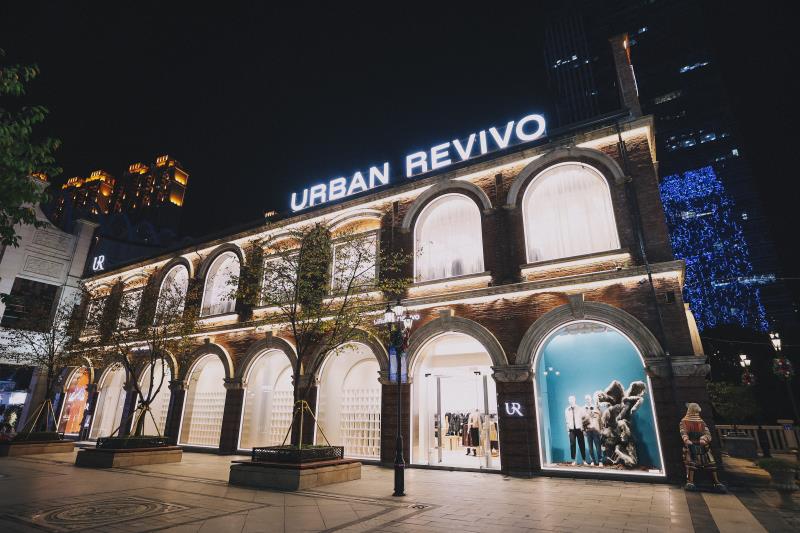
UR store, brand for the picture
Interview |Yaolan Yang Xuan
Text |Yao LAN
Edit |Qiao Qian
Source |Future consumption in 36Kr (ID: LSLB168)
Fast fashion has a wonderful beginning in China. What people see is that the Spanish brand ZARA officially entered China in 2006, but neglected its corner in Guangdong. That year, its strong rival was born.
Before 2017, ZARA, H&M, GAP and other international fast fashion brands spent their time in golden decade. They occupied gold shops in major shopping malls in first-and second-tier cities with an area of thousands of square meters, and played an important role as a "passenger flow driver". Nowadays, in China, they are not only replaced by Lululemon offline, but also slow in the face of emerging e-commerce channels.
There are many players overtaking in corners in domestic brands. On June 18th last year, on the Tmall women’s sales list, the champion was no longer Uniqlo, which had dominated the list for a long time, but URBAN REVIVO (hereinafter referred to as UR), a local fast fashion brand that had ranked second the year before, while ZARA was always behind UR, falling out of the top ten all the way.
UR seems to have jumped into the public eye overnight. In fact, it has been quietly growing offline for more than ten years, and has completed five rounds of financing in a low-key manner, and its annual sales scale has exceeded 6 billion yuan.
In this "fast war", UR showed its "slow" side. Known as "ZARA’s Apprentice in China", UR has adopted the practice of "holding high and beating high" since its birth, and opened "luxury stores". However, before it was released to join in 2015, the number of UR’s stores was small, and its founder Li Mingguang chose to spend financing on the construction of buyers and designers, supply chain construction and digital system, which lengthened its profit schedule.
After ten years of dormancy, in 2017, UR achieved sales of nearly 3 billion yuan by relying on about 200 stores, making a profit for the first time. To know that clothing is a high-margin industry, it is not difficult to make quick money.
Li Mingguang regards clothes as spiritual products. He said that the essence of fast fashion clothing industry is "fashion", not "fast". "China’s clothing enterprises generally only have a glorious period of about 20 years. It sells well, but it is not fashionable. This is the reason why many brands have declined. "
"Fashion" is perceptual and individualized in Li Mingguang’s eyes. Just as he plays his favorite alternative music in UR stores, he advocates that designers and buyers should often watch art exhibitions, concerts, operas, travel and stay in good hotels. "These are all about improving aesthetics". Today, UR has about 400 stores around the world, and the designer development team has more than 500 members, while ZARA, which has more than 1,900 stores around the world, has only 600 designers.
He Yu, the founding partner of Black Ant Capital, still remembers his first meeting with Li Mingguang. "The first feeling is that people are glowing, dressed in white, clean and refreshing, which is very consistent with their store temperament." He Yu said that Li Mingguang was the founder of "meaning-oriented", and he had higher pursuit besides making a big company and making profits.
How to always keep "fashion"? How to lead the company from the scale of one billion to the scale of ten billion? The following is a dialogue between 36Kr’s future consumption and UR founder Li Mingguang:
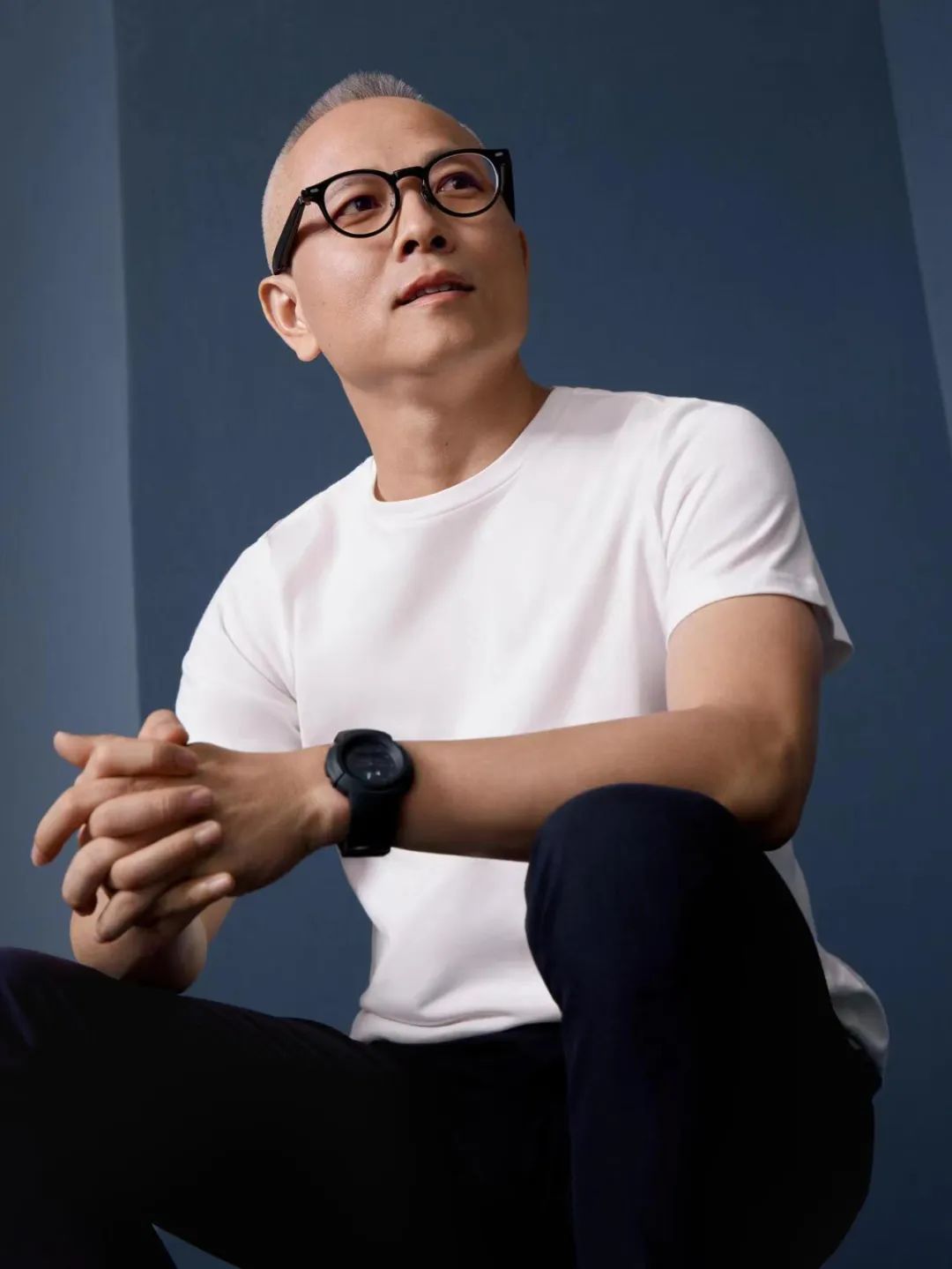
UR founder Li Mingguang
Future consumption in 36Kr: How did the brand name "UR" come from?
Li Mingguang:I will buy a lot of foreign music discs, and the cover design of some discs is really emotional. Seeing the beautiful Logo, I was thinking, I will be a brand in the future, and how to use it. UR’s name is inspired by a music disc released at the beginning of the new century, hoping to convey the creative aesthetic concept that can span the times and an international vision.
36Kr’s future consumption: UR is actually your fifth entrepreneurial practice. From the beginning, did you clearly know how to be a "brand"?
Li Mingguang:It should be said that I have always liked and pursued "beauty" since middle school, but I didn’t understand the matter of "making a brand" from the beginning.
In 1998, I started my first business, prepared 50,000 yuan, and opened a foreign trade clothing store in an alley in Baiyun District, Guangzhou, with a pavement of 30 square meters and a monthly rent of 2,000 yuan. A year later, I went to Guangzhou’s high-end business district-Good World Plaza to open a shop, and the monthly rent was 40,000, and the business was really better. But it is difficult to develop rapidly, or it is difficult to copy, because I am engaged in miscellaneous brand retail, not brand.
36Kr’s future consumption: Your brand road seems to have started from acting as an agent for the men’s wear brand VJC in 2000, and you also opened this store in the most fashionable Shanghai. This is a big step, and you are very courageous.
Li Mingguang:But the performance is not satisfactory. Basically, this store loses money every month. In just one year, I have spent almost all the money I have accumulated in the past two years. It is certain to close it. If I have any experience this year, I have a deeper understanding of how to make price positioning and communicate with consumers. Most importantly, we have strengthened our determination to create our own brand.
36Kr’s Future Consumption: How did you decide to be a "fast fashion" brand?
Li Mingguang:In 2003, I saw the domestic media reports about ZARA, and then I went to Japan to see ZARA’s physical store, and soon realized that "fast fashion" was the blue ocean in the Red Sea of China clothing at that time. I called to ask ZARA if she could join us, but they said she didn’t. I don’t think this is high-tech (laughs). It’s not that difficult to do, is it?
In 2006, we formally established UR brand, and ZARA entered the China market in the same year. UR opened its first store in Zhengjia Plaza, Guangzhou. At that time, a shop was more than 100 square meters. I told the mall that you had opened all eight shops, and I wanted to build a brand with a brand-new business model. In fact, Zhengjia Plaza in that period didn’t develop so well, and they were very happy to be taken away by self-employed people like me.
After opening the store for three months, UR’s sales performance is very good. I used to have a jeans brand BC jeans, which also opened a store in Zhengjia Plaza. The store area is 100 square meters, and the monthly rent is more than 100,000 yuan, but the sales volume is also more than 100,000 yuan, so the sales volume has not increased. Finally, I decided to close the jeans brand that opened seven or eight stores.
Future consumption in 36Kr: In the second year after UR opened its first store in China, another fast fashion giant H&M came. ZARA’s first store is located in Nanjing West Road, Shanghai, and H&M’s first store is located in Huaihai Middle Road, Shanghai. You are also targeting first-and second-tier cities. In terms of point selection, these overseas giants have priority. What does UR rely on to compete with them head-on?
Li Mingguang:At that time, in Zhengjia Plaza, Guangzhou, UR was the largest brand in the single clothing store except the department store giant Friendship Store. After driving out, I obviously feel that consumers think that we are a "big brand" and will have a sense of trust. Through the dimensions of shop size, decoration materials, lighting and music played, consumers can judge what brand this stall is.
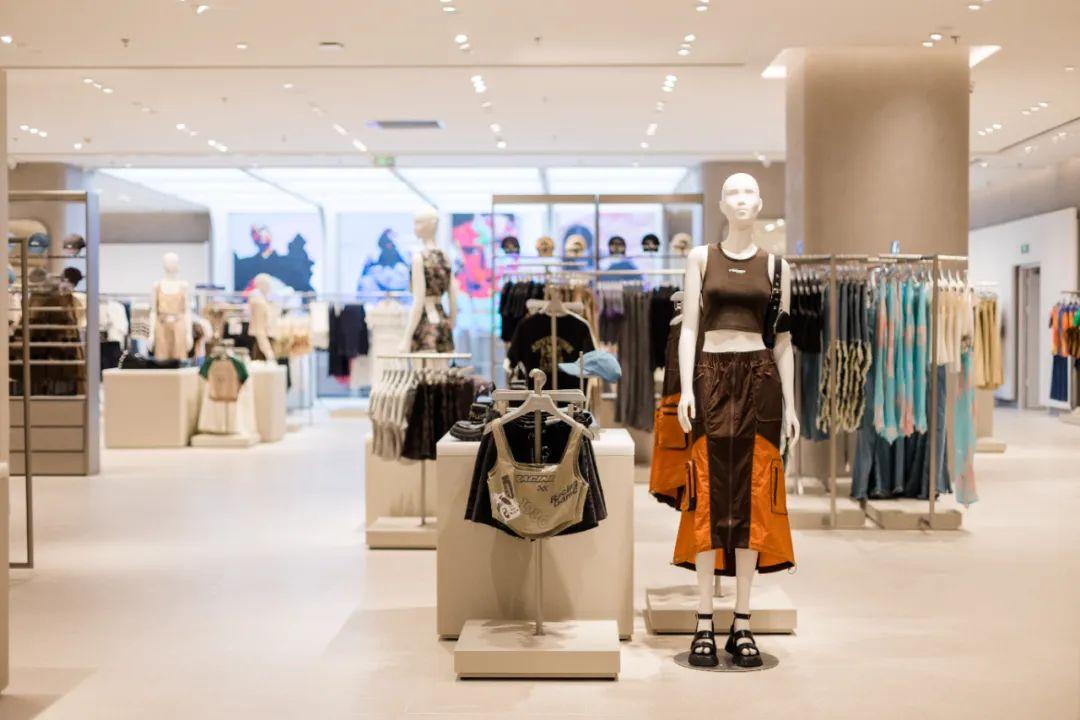
UR store, brand for the picture
For a long time, few local clothing brands dared to open stores over 200 square meters. At that time, studying this business model, we knew that the store should be big enough and the store style was "luxury". UR didn’t invest much in marketing before, and the store itself was an advertisement. Brand is a kind of belief. Our store wants to be like a "church", and many art installations have been added in the store. In this atmosphere, consumers will have a feeling of admiration for the brand.
36Kr’s future consumption: I heard that you like listening to music very much. Will you play your favorite music in the store?
Li Mingguang: Yes, I want consumers to hear songs that are different or have never been heard before. I like House and Lounge styles which combine modern musical instruments with national elements, and I like the music of Buddha-bar best. Buddha-bar is located in Paris, which is a pub and a restaurant. There is a giant Buddha statue in the store, and the music played includes Middle Eastern elements, Japanese Sanxian and traditional music in China, etc. The styles are diverse and very special. Like listening to music, but also the pursuit of "beauty" performance.
36Kr’s Future Consumption: What did UR learn from ZARA?
Li Mingguang:In the past, clothing enterprises often attended some training courses, and I also attended them, but I found that I didn’t learn what I wanted to learn, so I stopped attending them later. To learn it, our channels are more media reports.
You will find "fast fashion". There is nothing summative for you to learn in China, so you have to grope for it by yourself, and then come back after learning something wrong. In the past, we read those reports that ZARA stores changed goods once a month, so we changed them once. Later, it was found that it was wrong. When people changed them once, they did not change them all, but partially. Among them, the trendy models may be updated once a week. Simply put, the traditional clothing brand is "a small amount of money", and ZARA has achieved a breakthrough of "a large amount of money but a small amount".
In 2006 and 2007, when ZARA was mentioned, many people didn’t know what brand it was. UR was the verifier and beneficiary of this business model in China. We have now precipitated our own "fast fashion business model".
36Kr’s Future Consumption: What do you think is the essence of "fast fashion business model"?
Li Mingguang:As the name implies, it is fast and fashionable, among which "fashion" is the core element.
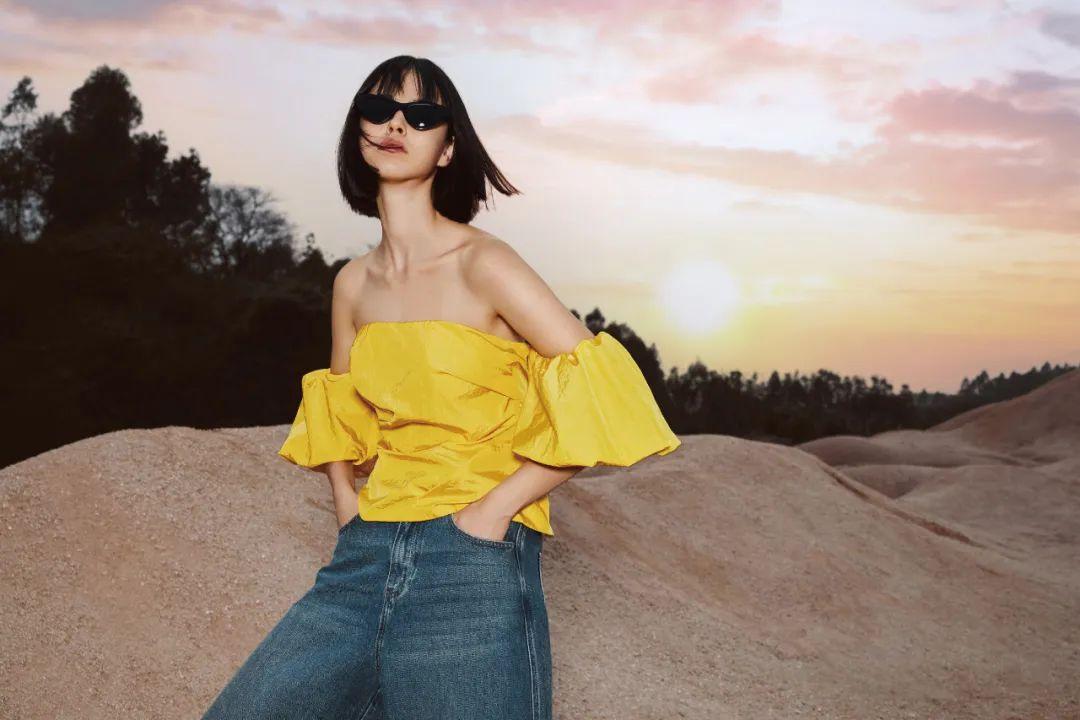
UR women’s wear, brand for the picture
36Kr’s future consumption: Why is "fast" not the core element?
Li Mingguang:The supply chain of China garment industry is very mature, and so are some other industries. If you only compete for "fast" in this respect, UR is ahead. But this is not enough. We want to be a "fashion brand". The essence of clothing industry is fashion, and creative aesthetic ability is not only the core competitiveness of UR, but also the core competitiveness of clothing industry.
In the fashion industry, especially luxury brands, there are generally two parallel positions, one is CEO and the other is creative director. And in many cases, the creative director is a more decisive role. When luxury brands fail to grow, they often change creative directors and CEOs, because the brand itself has gone through a long period of time, which shows that organizational construction usually does not have problems, and more creativity is not good. Clothing enterprises in China generally only have a glorious period of about 20 years, and then they go down, because it is no longer fashionable.
36Kr’s Future Consumption: What’s Your Role?
Li Mingguang:You can understand that I have more roles as creative director. In the early days, I will follow the details of each model. Now, I am more concerned with controlling the overall direction, such as internationalization, being too young, being too old and so on.
36Kr’s Future Consumption: What’s the difference between UR and ZARA from a product perspective?
Li Mingguang:Compared with ZARA, UR is not the most international, but it is this difference that makes us do well in China. UR is more localized in terms of format, size, color and design details. ZARA is a European style, and many clothes need to be very tall to control, and the whole is a little mature.
36Kr’s future consumption: There are dozens of fashion styles popular in the market today. It’s hard to say which style dominates the market. How can your team grasp the latest fashion trends?
Li Mingguang:This actually depends on everyone’s fashion potential, because fashion is a perceptual and individual thing, and it cannot be standardized or copied. But it has a learning method, that is to say, as a designer and a buyer, you should not only pay attention to industry information, but also often watch art exhibitions, concerts and operas, travel more and stay in some good hotels, all of which are improving your own taste.
Recruiting designers and buyers, I also care about whether TA is willing to invest enough time in this matter, that is, "crazy about fashion". People who often have potential will be "madly in love". Dress and makeup are the first factors to judge "crazy love". Secondly, I will ask some professional questions.
36Kr’s future consumption: Apart from personal potential and "crazy love", is there a mechanism to ensure that UR is always fashionable?
Li Mingguang:The biggest difference between us and traditional clothing brands is that the product design is dominated by buyers rather than designers. Designers help buyers to realize the landing of products, and designers can play freely, but buyers should control them well and make products have two dimensions at the same time-leading fashion and selling well, so as to achieve the best balance between aesthetics and commerce.
UR designers may have a stronger digital thinking, and clearly understand why each model is easy to sell or not, which will help TA to have a clearer direction when designing the next model. However, we will never suppress TA’s creativity, not completely maximize sales. I don’t want UR products to sell well, but they are not fashionable. It sells well, but it is not fashionable, which is the reason why many China brands have declined.
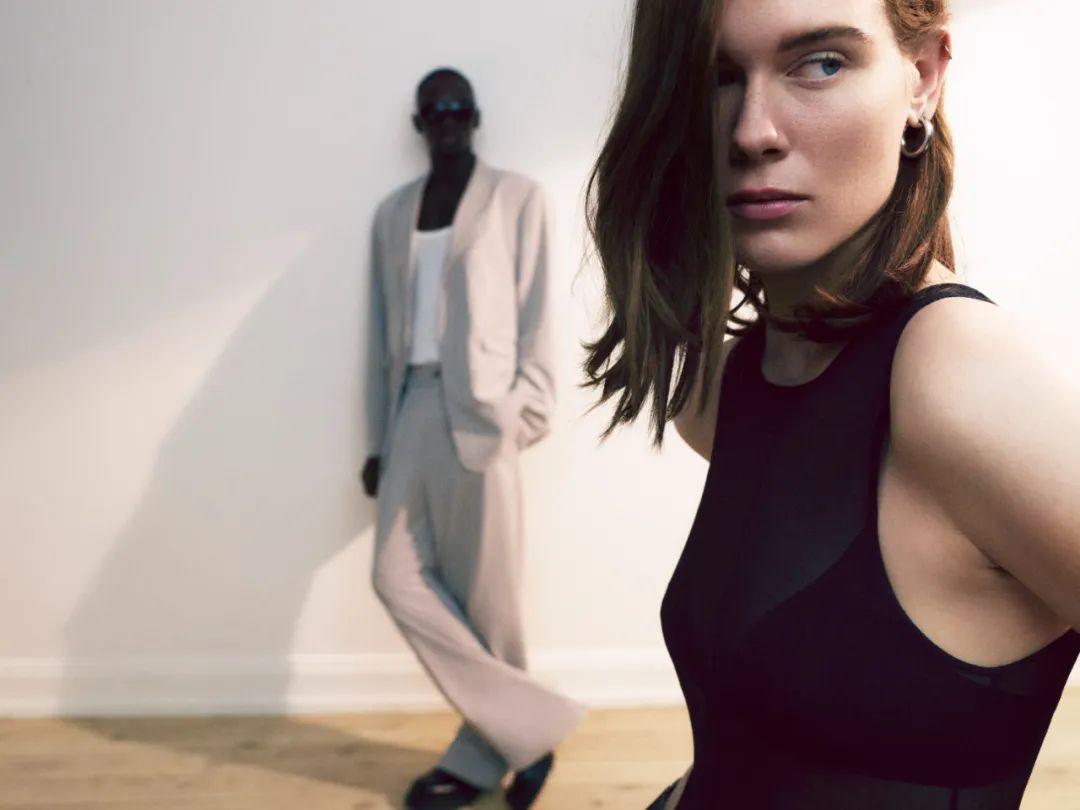
UR women’s and men’s wear, brand for the picture.
36Kr’s future consumption: When it comes to "selling well", what is UR’s definition of "explosion"?
Li Mingguang:Reach a certain sales volume, and the gross profit is within the standards we set, which is the explosion. If you can sell 10 thousand pieces without making money, it is definitely not an explosion.
Future consumption in 36Kr: What is the earliest supply chain?
Li Mingguang:At first, we produced 30 pieces at a time, and many suppliers were unwilling to cooperate, which forced us to build our own factory in 2007. Slowly, for some reasons, the workshop worker opened a factory with 10 or 20 people outside with his wife or several fellow villagers, and then asked me for goods. With the increase of UR volume, the scale of these factories is also expanding, and UR is always their core customer. You can understand that these factories were hatched by us and gradually formed a small supply chain cluster around UR to serve UR. Up to now, bigger suppliers have also come to us.
36Kr’s future consumption: the most criticized issue of "fast fashion" is quality. How do you evaluate the product quality of early UR?
Li Mingguang:We have always believed that "quality" is an important factor driving consumers to continue to buy fast fashion brands. In the early days, many suppliers pursued profit maximization without considering quality at all, and each version was different. How can we talk about building a brand? So, later we built our own factory and R&D center. At present, the trend and quality of products are improving rapidly every year, and the speed of supply chain is also at the leading level in the industry. From design to store shelves, UR can take 6 days at the earliest.
36Kr’s future consumption: The international fast fashion giants represented by ZARA are no longer so beautiful in China. What do you think are the reasons for this situation?
Li Mingguang:I admire ZARA very much. The "fast fashion" it represents has deeply influenced the clothing industry in China.
In the past, ZARA has made great transformation and adjustment. For example, many stores have been closed in Europe, and many offline stores have gone online. At the same time, it raises the sense of quality to cope with the competition of some low-end brands. These actions made its sales and profits last year very good. There are two main reasons for the poor performance in China. First, the products are not localized enough, so it is difficult to go to the third and fourth lines, and it is impossible to develop on a large scale; Second, the main industrial chain is in Europe, so it is difficult to supply the latest products to China quickly. I firmly believe that its development in China is still worth looking forward to if it can get through the supply chain and make a big breakthrough in product level from this year.
Future consumption in 36Kr: Besides quality, serious homogenization is also a problem faced by fast fashion brands.
Li Mingguang:Just like Gucci and LV, both belong to the luxury field, making products related to aesthetics, which are non-standard categories. The same dress, the styles designed by each brand are absolutely different, because there are DNA of each brand in it.
36Kr’s Future Consumption: But Uniqlo is living well in China.
Li Mingguang:Uniqlo is the basic model for winning quality, and its customer base is relatively wide. Nowadays, Shopping Mall, Uniqlo and UR in China are two major clothing brands that they prefer. One focuses on basic models and the other focuses on fashion models, which can attract different customers. Uniqlo now strengthens its quality positioning with a sense of science and technology, and we focus on the trend and fashion.
36Kr’s future consumption: more subdivided styles and richer styles, in fact, the requirements for the supply chain have been further improved. Some people compare SHEIN to "advanced ZARA". What do you think of this opponent from China?
Li Mingguang:SHEIN is called "Super Fast Fashion", which is another brand-new business model. By simple comparison, we are positioned a little higher than it. What I want to say is that every model and style has its market opportunities.
36Kr’s Future Consumption: What consumer goods companies do you admire in China?
Li Mingguang:At present, there are many powerful consumer goods companies in China, especially some consumer brand companies that have accumulated over time, such as Arowana and Gree. I quite appreciate a suit company that is partial to production in the clothing industry. It has made a flexible supply chain system, which is very powerful and can meet the personalized and fast needs of consumers.
36Kr’s Future Consumption: Not only in the field of consumption, which China companies do you like?
Li Mingguang:I like two China enterprises, one is Huawei and the other is Vanke. Let’s talk about Huawei first. It is famous for its heavy investment in R&D. What impressed me most is the wolf management concept. Vanke is a very professional company, and the standardization and modernization of management are very good. This is what I particularly want to learn, because I am more emotional. I hope UR will have its own scientific management system in the future, which will ensure the sustainability of enterprise development.
36Kr’s future consumption: Before launching e-commerce, UR grew silently offline for more than ten years. From 2020 to 2022, UR’s ranking on the Tmall 618 sales list rose all the way, and finally won the championship, surpassing Uniqlo. Do you think it will be easier for clothing brands to go online from offline?
Li Mingguang:In my opinion, offline can build a more stable user base. Doing online, to put it bluntly, is to open a store on the platform. Of course, it also tests the operational ability, such as how to play different live broadcasts. However, the offline chain is very long, involving multi-city management, and site selection is only the first step, as well as space design, decoration, water and electricity fire protection and other links, which cost more. Where is the cashier, how wide the door is, and how to move the line? These questions are trivial. For big stores, atmosphere building is a science.
36Kr’s future consumption: Shanghai is UR’s "base camp", and there are more stores than ZARA. What is your logic of opening stores?
Li Mingguang:We call it the onion principle. In China, Shanghai should be opened before other cities, because Shanghai is the fashion capital of China. If you stand there, you can follow the trend and influence other cities. In Shanghai, it’s best to start from Huaihai Road or Nanjing West Road. You can’t suddenly open a very biased suburb for you to open, so you should stick to it.
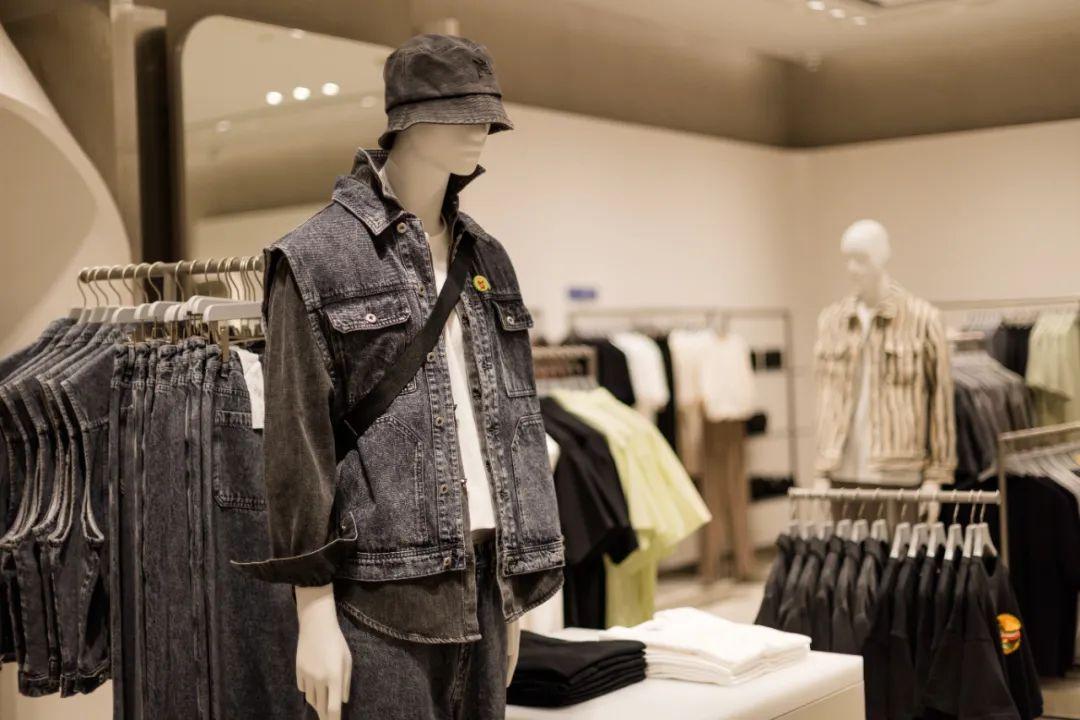
UR store, brand for the picture
36Kr’s Future Consumption: Why did you choose to join in 2015?
Li Mingguang:After the successful financing in 2010, I found that the direct store has a large investment in a single store, about 6 million stores, and the funds are limited. In addition, the China market is so big that we have to let go of joining in the end. A very clever thing happened in this process. A Shopping Mall in Zhengzhou asked me to open a shop. I saw that the location of this Mall seemed not very good, so I dared not open it. Later, he said that I would invest, so you can help me manage it. At that time, we were short of money, so I agreed, and the result proved that the effect was good.
After joining in 2015, the scale ran out. The pace of opening stores every year is very stable, basically 50, even in the past three years, there are 40~50.
Future consumption in 36Kr: Since 2015, UR has started brand transformation and put forward a new positioning. You don’t want to be called "ZARA’s China Apprentice" any more.
Li Mingguang:Before 2015, we developed in Shopping Mall. Many people said that we were the second ZARA. To tell the truth, we were a little unconvinced at that time. Many successful brands in China, such as Internet brands, are transformed from foreign advanced business models. I don’t understand why this is not easy for clothing brands, so I want to build a unique UR in the world.
At the peak of fast fashion, there were three criticisms, namely, lack of originality, poor quality and environmental protection. So I put forward the positioning of "fast luxury fashion" again, trying to find a blank spot in the market between "fast fashion" and "light luxury"-the design is more fashionable and the quality is higher, so the price will naturally rise accordingly; At the same time, don’t update too fast to solve environmental problems.
Later, everyone will feel a little contradictory, and "fast" and "luxury" can’t have both. The team is now rethinking how to describe the new UR positioning.
36Kr’s future consumption: To become the unique UR in the world means that UR’s ambition is not just to compete with giants at home.
Li Mingguang:The strategic theory will tell you to make China bigger and stronger before going out, but I don’t think clothing brands with higher aspirations should do this. So, in 2016, UR opened the first overseas physical store in Singapore.
36Kr’s future consumption: Why not go through the China market before going to sea?
Li Mingguang:UR’s brand positioning and vision determine that we must be international. First, although China’s clothing market is also large, it only accounts for a quarter of the global market. To achieve over 100 billion revenues, a single brand must be globalized. You will find that there is no single clothing brand with a scale of more than 30 billion in China. It is true that all styles can survive, but as consumers’ aesthetic preferences become more and more international, brands with more international styles can have a longer life cycle. If you can gain a foothold in the world, it proves that your fashion has reached the international level.
Second, many clothing brands in China compromise a lot when they go down. Although sales will increase for a period of time after the compromise, after a while, consumers will abandon you if they think you are not fashionable enough, so this will test the strategic strength of the brand. UR is not only sinking at home and forcing itself to compromise. Why not go abroad and accept the challenge first? Singapore has a high degree of internationalization, and our stores are growing well. Now it proves that our strategy is correct.
36Kr’s Future Consumption: Will China sink the market? Do you need to compromise?
Li Mingguang:Sooner or later, it will sink into the market, but when to sink and where to "compromise", the inside is still thinking. UR is a link between the preceding and the following. It can not only upgrade its style in the international market, but also meet a wave of consumers who are temporarily weaker than the international level in fashion in China.
36Kr’s future consumption: UR didn’t make a profit in the first ten years. Looking back on this period, what does it mean to you and UR?
Li Mingguang: This decade is a stage of laying a foundation and practicing internal strength. I started financing in 2009, and in 2010, I got 10 million dollars. In 2011, I was short of money, and I got 60 million yuan. In other words, there is a lack of money between its establishment and 2017. UR has made 1 billion yuan and still hasn’t made any money. Some investors told me that many of your clothing peers have made 500 million yuan. Then we went to check whether the number of people was too large and the cost was not well managed. After checking them all, it seemed that none of these problems existed.
When we reach 2 billion yuan, we are still not profitable. Then investors asked me why I haven’t made any money yet, and I couldn’t find any other reason (laughs). Our own summary may be determined by our business model. UR is a brand that holds high and hits high.
36Kr’s future consumption: what are the advantages and disadvantages?
Li Mingguang:I opened a big store as soon as I came up, and I attached great importance to the image of the store. I may not have done so well in controlling the cost of decoration. After 10 years of long accumulation, we have finally established a relatively high barrier, and other brands can easily come in without a little capital or an idea.
From an unplanned stack of goods to a series of strategic ones, the store space has never been very good and is getting better and better, so we have gradually formed our own business model. In 2015, I let go of joining, and it developed rapidly at once. This decade has been slow, and I am right in retrospect.
36Kr’s future consumption: what challenges will it bring to the company if it spans different revenue scales?
Li Mingguang:The core reason why UR can go today is that our business model has not changed much from beginning to end. Large-scale expansion will have an impact on efficiency. Recently, we are thinking about how to make UR, which has grown into a big company, more flexible.
I have read many reports that 100 million is a barrier, 5 billion is a barrier, and 10 billion is a barrier. I am constantly experiencing the different feelings of each barrier. In the early days, I would worry or question, can I really do 1 billion or 5 billion with my own and my team’s ability? But now, we are moving towards a scale of 10 billion.
36Kr’s Future Consumption: What was your "anxiety" in the past three years?
Li Mingguang:My biggest experience is that cash flow is very important. Especially in November last year before the opening of the epidemic, I felt that enterprises would fall at any time. I had never felt this anxiety before. However, the CFO is more anxious than me (laughs). I actually thought about it. If this really happens, how can I make UR make a comeback? The answer is that I can still do a good job in maintaining the essence and basic ability of clothing, and that is our design.
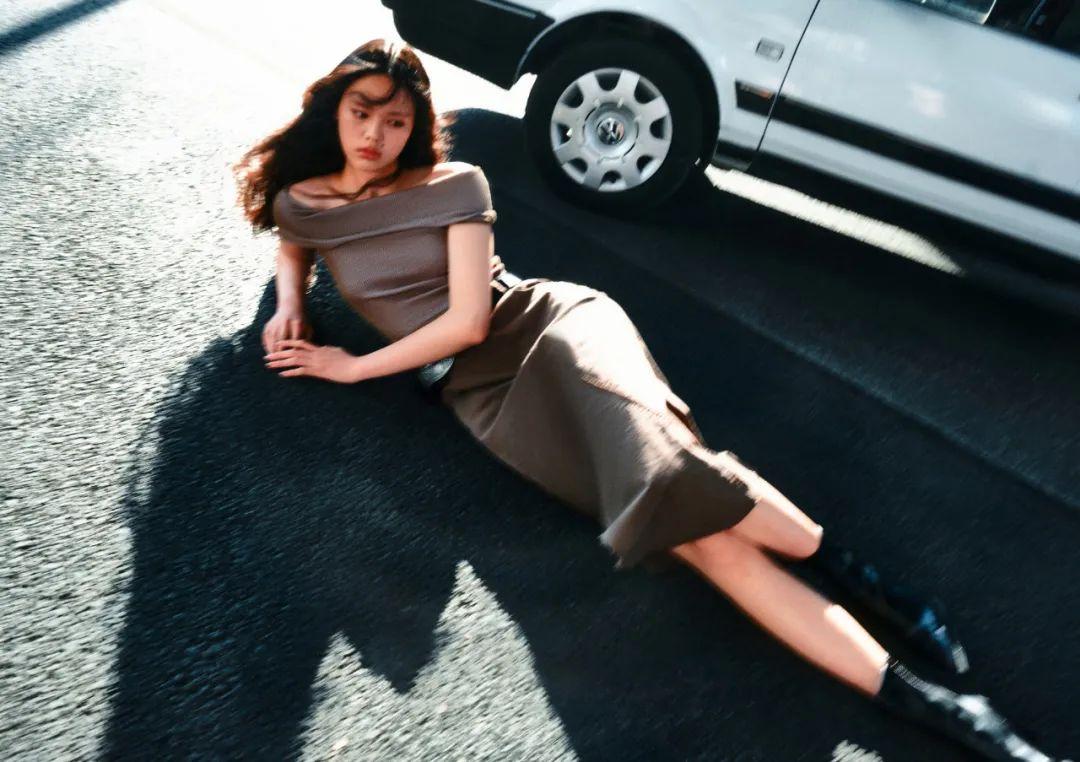
UR women’s wear, brand for the picture
36Kr’s Future Consumption: If you started your business in the clothing industry today, would you choose a different incision?
Li Mingguang:If today I find that there is no second leading brand in the fast fashion industry except ZARA, I will still choose this incision.
Clothing is a very competitive industry. I call it "cake cutting market", and the market share of each enterprise is relatively low. It is not a sunrise industry, but it is not a sunset industry. The good point is that the market capacity is large and the demand is stratified and diversified. Uniqlo’s founder has been ranked as the richest man in Japan for many times, LV’s president is the richest man in the world, and ZARA’s boss is the second richest man in Europe. I was just wondering, why do you think that such a traditional so-called clothing fashion industry has produced outstanding enterprises and entrepreneurs in such developed countries as Japan and Europe? My understanding is that clothing is a spiritual product. After material satisfaction, clothing is needed to meet spiritual needs, and technology cannot solve this demand. Therefore, clothing is also an industry that can achieve great enterprises.
Creative aesthetic ability is a difficult point in this industry and an important factor affecting the fluctuation of the industry. Investors often ask me how to keep my creativity. I think the fast fashion industry seems to have some ways to make this fluctuation smaller.
36Kr’s Future Consumption: What is UR’s way to make this fluctuation smaller?
Li Mingguang:Digital construction is the key. For example, we have explosions, best-selling models, flat-selling models, unsalable models and ultra-unsalable models. Explosions will have commonalities, so maximize this commonality and add this factor to the best-selling models. Generally speaking, UR will make efficient decisions with the help of IT system, and also rely on the perceptual ability of buyers and designers. In the whole product structure, sales-oriented and creative products account for half each, and we will make a good balance.
We have long established two strategies-fashion UR and technology UR, with fashion as the root and technology as the foundation. The core competitiveness of the company is fashion, and technology can help improve operational efficiency. Our IT team is close to 200 people, which is rare in clothing companies with large offline revenue. Our investment in this area is second only to product research and development.
Future Consumption in 36Kr: What is UR’s latest thinking about brand building?
Li Mingguang:I used to think that the store is our best advertisement, and the core is to provide consumers with a unique experience from the perspective of vision and space. If the product is good, it will get twice the result with half the effort, but now I find that this strategy alone may not be enough. In the past ten years, UR has driven brand development by product power. In the next 10 years, I hope to add a brand power to realize two-wheel drive of product power and brand power. Starting from this year, we will make great efforts to build brand strength and make the brand’s personality and spirit more distinct. The fashion industry has always needed to be expressed.
36Kr’s Future Consumption: What do you want UR to look like in the end?
Li Mingguang:Many overseas fashion brands have come to China and set up stores in Shanghai, Beijing, Guangzhou, Hangzhou and other places, but no China brand can be opened in London, new york, Munich or Los Angeles. In the next 10~20 years, there will be such a brand in China. Why not UR?
If clothing enterprises want to develop on a large scale, they will definitely take two paths, one is brand globalization, and the other is multi-brand. In the future, UR these two roads will go hand in hand.
Future consumption in 36Kr: Will you often go back to the first store now?
Li Mingguang:If that store is still in its original state, I may go back often, but it has become another store.
36Kr’s future consumption: what changes have you made?
Li Mingguang:People must be getting older and quieter. The love of clothing, the pursuit of beauty, and the firmness of brand mission and vision have never changed.